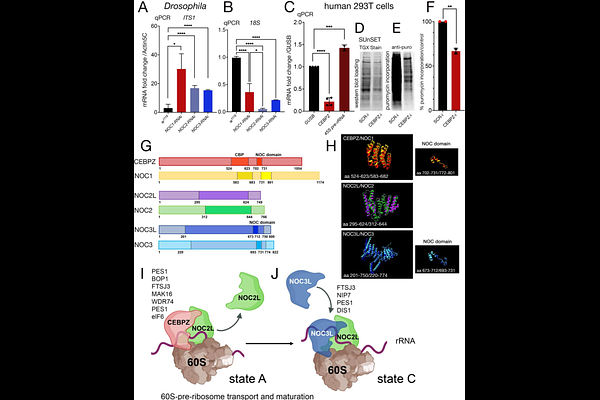From Flies to Humans: Conserved Roles of CEBPZ, NOC2L, and NOC3L in rRNA Processing and Tumorigenesis

From Flies to Humans: Conserved Roles of CEBPZ, NOC2L, and NOC3L in rRNA Processing and Tumorigenesis
Rambaldelli, G.; Manara, V.; Vutera Cuda, A.; Bertalot, G.; Penzo, M.; bellosta, p.
AbstractNOC1, NOC2, and NOC3 are conserved nucleolar proteins essential for regulating ribo-somal RNA (rRNA) maturation, a process critical for cellular homeostasis. NOC1, in Dro-sophila and yeast, enhances nucleolar activity to sustain rRNA processing, whereas its depletion leads to impaired polysome formation, reduced protein synthesis, and apopto-sis. These genes have vertebrate homologs called CEBPZ, NOC2L, and NOC3l. In this study, we demonstrated that the RNA-regulatory functions of CEBPZ are conserved in ver-tebrates, and we showed that CEBPZ leads to the accumulation of 45S-pre rRNA, with consequent reduction in protein synthesis. Gene Ontology and bioinformatic analyses of CEBPZ, NOC2L, and NOC3L in tumors highlight a significant correlation between their re-duction and the processes that regulate rRNA and 60S ribosomal maturation. Compara-tive analysis of their expression in tumor databases revealed that CEBPZ, NOC2L, and NOC3L exhibit contrasting expression patterns across tumor types. This dual role sug-gests that their overexpression promotes tumor growth, whereas reduced expression may exert tumor-suppressive effects, uncovering unexpected regulatory functions exerted by these proteins in cancer.